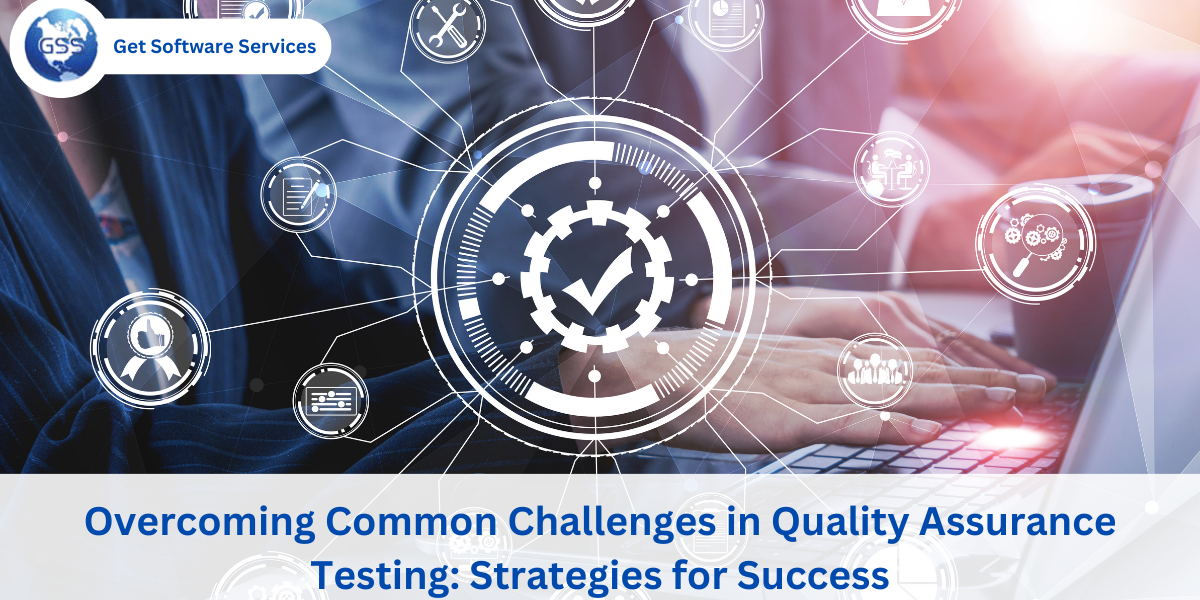The testing process plays a significant role in the Quality Assurance testing process to deliver quality product outputs to the end user. However, to achieve this, the resources must face many challenges to match the client’s expectations. Many organisations have adapted streamlined quality assurance practices to achieve the desired quality levels. In today’s fast pacing world, agile methodology is preferred by many software firms for which the Quality Assurance testing process needs to be highly reliable and spontaneous to meet short deadlines.
Let us look into some of the common challenges faced by testing professionals in producing quality deliverables.
1. Incomplete or Inaccurate Requirements
Some clients fail to communicate their requirements clearly to the stakeholders during the requirement-freezing stage. This can lead to misunderstanding of the functionality by the BA and they draft the RSD document based on their understanding. This can lead to functionality mismatch and affect the quality of the application thus lowering the credibility of the organisation.
2. Communication Breakdowns
Poor interaction between the project members can also lead to so much of ambiguities affecting the output quality.
3. Limited Resources
An inadequate Quality Assurane team can also fail to meet the desired quality due to a lack of manpower. The pressure goes on the limited resources which can be exhausting and lead to improper testing of the functionalities. The final result is quality cannot be assured to the end users.
4. Changing Requirements
Some clients are so choosy that they keep on changing requirements after seeing the module deliveries. New changes added would need more time for implementation and testing thereby affecting the delivery timeline. Also, sometimes changes could be confusing as developers could develop something completely different from what is expected. It is best to approach changes as enhancements and do it after delivering the project to avoid any confusion.
5. Technical Challenges
Covering all possible scenarios in the test document could be tedious when there is a short time frame. So, skilled resources with automation knowledge are required to overcome this problem and cover wide scenarios to deliver a minimal-error product.
6. Testing in Production Environments
Every QA person needs to ensure the application is working fine in the production URL given to the client. This is achieved either by accessing the client machine remotely or checking the URL given to the client. The application could be down on the client machine or some major functionalities breakdown would be there. The client needs to provide maximum cooperation to overcome problems in a production environment. It is because some functionalities can work fine on production URLs but not on the client machine, Testers need to be smart in talking to the clients and finding out the problem and resolving it for them.
7. Test Automation Challenges
There are advanced automation tools that can do testing in a fast-paced way efficiently. Finding a talented automation tester for the project who will perform the testing smartly is another big challenge to reaching maximum customer satisfaction. Finding the right tester who shares knowledge about automation tools and programming language is equally important for the betterment of the product. This is because automation frameworks are quick and even a small bug fix can be tested in no time by running automation scripts on such modern tools.
8. Balancing Speed and Quality
Speed and quality go hand in hand in hasty projects as the product quality cannot be compromised. Assigning a big team with enough resources to dedicatedly run the test cases and check all possible scenarios can lead to a fast process and promise quality outputs. Do it hastily but without missing any important scenarios to avoid quality lags in the deliverable.
Strategies for Overcoming Quality Assurance Testing Challenges
There are certain strategies to be followed by the Quality Assurance testing team to reach the project goals in spite of discrepancies. Following them can really help and allow the QA team to deliver high-quality products to the end users.
1. Establishing Clear Requirements and Priorities
QA team needs to be sharp in analyzing the requirements and clear their doubts with the clients to avoid any confusion. They can confirm with the client once on the expectation of the functionality to deliver it with perfection. Raise a concern immediately to the clients when there is an unclear document and get it resolved on time. Also, set your priorities straight about which module needs to be delivered first and work closely towards delivering them.
2. Improving Communication and Collaboration
QA members need to communicate effectively with all project members and circulate the information among the team for better project focus. Also, Quality Assurance testing is the end process in stamping the product quality. So, they should collaborate with all stakeholders in understanding their expectations on the project and work in alignment to live up to their expectations.
3. Allocating Resources Efficiently
Resource management is very crucial in testing as every tester needs to be independently responsible for assigned modules. They have to take sole ownership and ensure the module is error free and one tester needs to do integration testing to ensure all functionalities are working fine together. Assigning testers for regression, retesting, smoke, usability, and compatibility can collectively contribute to the quality of the product altogether.
4. Implementing Continous Testing
Back-to-back rigorous testing after every error fix can contribute towards a quality deliverable as thorough testing will be done. Testers need to be proactive and gather the no of bugs fixed and separate them among themselves and work on them. Every tester should ensure a single bug fix is not affecting other modules and that all functionalities are working fine.
Conclusion
In today’s competitive market delivering highly reliable products is important to stay successful in the business. Scalability and performance are two essential factors for an application and are to be assessed by the QA team to ensure the products are performing well even post-delivery. There will be lots of challenges faced by the QA team during the project and post deliveries which can be handled with ease if they follow the right strategies. Preventive strategies can result in better project outputs improving the reliability of your work.
Get Software Services is a competitive company that aims at providing quality QA training courses to aspiring testing professionals in achieving excellence in their careers. We have the best-in-class faculties to impart the right knowledge on Quality assurance testing and advanced tools in the market. Get in touch with our team to avail the best industrial training and gain hands-on experience in realistic tools to become masters in the software industry.



